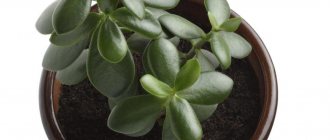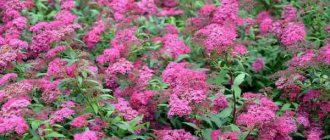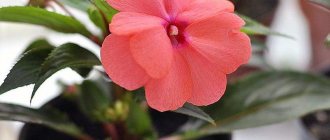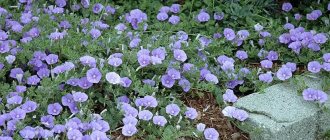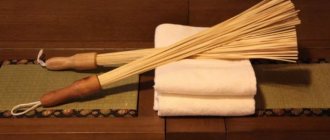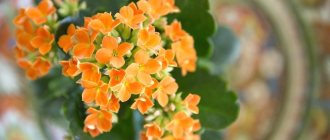- July 30, 2019
- Houseplants
- Elena Erokhina
Indoor bamboo is a miniature ornamental plant belonging to the genus Dracaena. It can have a spiral or even trunk, at the top of which there are hard, bright green, elongated leaves. The plant blooms rarely, throwing out an arrow with white flowers. Let's learn how to care for decorative bamboo to prevent its death.
Functional purpose
Bamboo undoubtedly has the task of decorating a room. It looks good both in apartments and offices. Vessels with it are placed in hotels, restaurants and photo studios. People who are passionate about this plant are able to change its shape so much that everyone, from small children to executives of large companies, will like the result. The bamboo trunk can be grown straight, or it can be artificially curled and made into a spiral shape. This approach helps to decorate the room, make the interior unforgettable, and make it suitable for a conversation or photo shoot.
What is known about the plant
In fact, how to grow indoor bamboo can be understood by determining its type. It really looks like a miniature copy of the tropical plant of the same name. That is why scientists debated for a long time what species to classify it as. It was recognized either as a bamboo or as an agave, but in the end it was classified as a dracaenaceae, giving the name Dracaena sanderian. In nature, this plant can be found in Africa, Southeast Asia and South America. Translated, the word “dracaena” means “female dragon.” However, according to the teachings of Feng Shui, the plant is considered positive and helps to achieve success in life.
If you come across a spiral-shaped plant, know that this is the result of special cultivation, when the still thin and young stem is placed in a special flask, which is removed after twisting.
Natural conditions allow the bamboo to grow perfectly straight with beautiful little leaves at the top. The average person can try to twist the trunk, guiding it around a decorative post. This manipulation can only be done with young shoots before they become woody. Over time, the stem forms buds that look like constrictions.
Indoors, dracaena can grow up to one meter. Moreover, as soon as it overcomes the threshold of 50 cm, it is recommended to transplant it into a larger pot and move it from the windowsill to the floor.
What does it look like
There are two types of indoor bamboo:
- Medium heights originate from Japanese ancestors. They can reach four meters in length and are grown in private homes with large areas and high ceilings. Such flowers tolerate heat well, but require a lot of light.
- Low-growing representatives are not taller than one and a half meters and can decorate both apartments and office spaces. They can withstand a minimum of light perfectly and will not die in a cool microclimate or in drafts.
The plant has a completely bare trunk, which either grows straight or bends in a spiral. Most often it is characterized by a green color, but there are also golden representatives of the genus. Also, the appearance will depend on the method of planting the indoor plant. Bamboo prefers unobtrusive care, but it will vary slightly in different environments. However, monitoring the presence of moisture in the pot is a prerequisite for a good result. Only the dracaena that receives enough liquid will be beautiful. Let's study what else is important for this plant.
Propagation by cuttings
It is better to propagate bamboo by cuttings in the spring. Young shoots that appear on the stem of an adult plant during this period are used as planting material. They are carefully cut off from the main stem and planted in the ground for rooting.
For rooting, you can use the same soil as for planting an adult plant. Bamboo grows very quickly, and this applies not only to the stems, but also to the roots, so the pot for the cutting must be spacious and tall. Even the smallest cuttings will quickly grow and fill the container with roots.
Bamboo is a houseplant that won't take much trouble to care for. Experienced gardeners recommend combining it with annual replanting to simplify the propagation process. The optimal time for transplantation is spring. At the same time, propagation by cuttings occurs. Young shoots after planting require certain care, which consists of loosening the soil and regular watering. It is necessary to moisten the soil daily. To do this, use settled water, the temperature of which is at least 22-25 degrees. As a mandatory care procedure, there should be a wet wipe of dust from the foliage.
An equally important point is loosening the soil. Young plants need fresh air, which penetrates them through the soil. Loosening optimizes the process and helps the cuttings take root.
Bamboo thrives in different conditions. The unpretentious plant grows quickly and in a short period of time can decorate the house with tropical compositions.
Caring for bamboo is quite simple. Regular watering and fertilizing will make the plant beautiful and green. If the foliage and stems have lightened, it means it’s time to apply fertilizer.
Bamboo is very sensitive to light; it must be grown in the sunny side, but bright rays can harm the crop. It is better to provide the plant with diffused light.
Basic Rules
Despite the fact that the flower can be grown both in soil and in a liquid medium, experts say there is no special care at home. Indoor bamboo should be grown according to rules that do not depend on the environment and relate to:
- locations;
- lighting;
- temperature;
- humidity.
Growing bamboo in water
For a long and trouble-free existence of bamboo in a liquid environment, simply placing it in water is not enough. An unpretentious plant will need to create optimal conditions for rapid growth. By doing group plantings, you can create your own tropical garden in a short time. The original method of growing will give the best result - a strong trunk, lush greenery, if planting bamboo in the house is carried out according to the following plan:
- The root system is inspected, overgrown, weak roots are removed. You can safely cut off up to 1/3 of the base;
- Select a container. It should be a low, wide vase. A transparent glass with decorative natural stones looks beautiful;
- The decor and container must be boiled in water before use;
- The bamboo stem is lowered into a vase, the roots are carefully leveled and fixed with decor;
- Fill the plant with filtered, settled water 2 cm above the stones;
- The fluid must be changed at least once every two weeks. The first signs that the water requires replacement are a musty smell, bubbly, cloudiness, and the appearance of foam;
- When watering every month, bamboo is fed with phosphorus, nitrogen fertilizers and their varieties.
Growing space
Bamboo at home requires a certain place. If you follow the recommendations of plant growers, then it should be placed on the windowsill on the eastern part of the house. If you listen to the teachings of Feng Shui, then the location will depend on what goals you want to achieve. The rule of placing decorative bamboo in the east will help you find good luck in your personal life and a strong family. Bamboo on the south side of the house will bring recognition and glory to the owner. You can achieve financial well-being by placing the pot on the south-eastern windowsill.
Growing methods
The ornamental plant is often grown at home in whole groups, creating compositions of different shapes. In the homeland of homemade bamboo, the soil is very wet, so many gardeners cultivate bushes not only in ordinary pots with soil, but also in water.
In the soil
Choose nutritious soil, with a large proportion of humus, loose, easily permeable to air and water. The container for planting must have drainage holes and a tray.
The growth rate of all parts of the plant, including the roots, is taken into account. Therefore, tubs are a good choice if there are no plans for an annual mandatory replanting. The dwarf perennial will grow well in a spacious pot for several seasons. High grades require large volume barrels with soil.
In water
The stylish oriental interior of the room is emphasized by vases in which bamboo feels no worse than in pots with soil
An important condition is regular proper care and mandatory feeding. If growth is too intense, cut off part of the roots - no more than a third.
To ensure plant stability, decorative stones, pebbles, glass beads, and a special hydrogel are placed in containers with water. This method requires more careful care, since the water in the vase is changed, preventing it from stagnating and accumulating bacteria. Use only melt water or settle it to reduce the amount of chlorine.
Lighting
Experts call the next important stage in cultivation to provide partial shade to the indoor bamboo plant. In care, it is important to prevent direct sunlight on the leaves, which will lead to the death of the flower. However, dracaena needs light, which affects its color and growth. This is why it is not recommended to completely shade the window. A lack of light can lead not only to damage to the appearance of the plant, namely to yellowing of the leaves and changes in shape, but also completely destroy the plant.
Temperature
As for the climate, at home, bamboo requires maintaining a temperature in the range from +18 to + 25 °C. A slight increase in this important parameter for the plant is also allowed. An increase in the indicator by 3-5 degrees will not cause any significant changes in the growth and development of dracaena.
It should be noted that for short-sized representatives, a temperature approaching the lower limit is preferable, and for medium-sized representatives, it is better to maintain the upper limit.
How to transplant
The growth of the root system of bamboo occurs quickly, so planting should be done annually. This is best done in the spring. For subsequent transplants, you need to take an even larger pot. The container should be moderately wide and deep, so that the distance from the edge of the pot to the stems is at least 5 cm.
Popular articles How to propagate roses from cuttings at home
The soil mixture used for replanting includes:
- 1 part humus;
- 1 part peat;
- 2 parts clay turf soil.
Don't forget to put drainage on the bottom. A newly transplanted plant needs proper maintenance, combining good watering and fertilizing.
Plant rejuvenation
Bamboo grows quickly, and the leaves need to be trimmed to prevent the plant from acquiring a shapeless and neglected appearance. Old leaves can be cut off completely. The cut areas are treated with charcoal powder. The crop is pruned to remove wilted, dead, diseased leaves, as well as to rest the plant.
Rejuvenation of bamboo requires subsequent care, including abundant watering, good lighting, fairly humid air, and high temperature. Pruning can stimulate the crop and accelerate its growth.
Humidity
Of course, the water-dwelling houseplant bamboo does not need additional watering. He just needs weekly fluid changes. However, both aquatic and soil-growing specimens do well after wiping their leaves with a damp cloth or after a short warm shower. It should be noted that bamboo should not be left near heating devices. Dry air will have a detrimental effect on dracaena.
A plant planted in the ground requires watering once every three days. Based on environmental conditions, in winter the humidity in the room should be 35%, and in summer - not lower than 50%.
It must be remembered that bamboo will feel good if you water it not with tap water, but with settled, thawed or distilled water.
Indoor bamboo: general information
Indoor bamboo does not require complex care; if the growing requirements are met, it can grow up to 25 cm in length.
If the culture is kept in a liquid medium, then it needs to be changed every 12-14 days. The liquid is pre-settled.
Dracaena bamboo
Use for interior decoration
Specialists use culture to complete the main interior. It easily combines with ceramic figurines and dishes, allowing you to create a unique style in the room. The plant does not require a certain air humidity and can be installed in any corner, even a dimly lit one.
Specimens are grown in soil or liquid and are suitable for creating an Asian-style effect. Medium-sized individuals are used as a living wall - to divide the room into zones.
For reference! Why is it better to replant the plant in a substrate after purchasing it at a flower shop: this will increase its chances of survival.
Bamboo in the interior
The magical properties of indoor bamboo
According to beliefs, bamboo at home can influence certain aspects of life. Magical properties depend on its exact location in the apartment:
- in the southeast corner - attracts financial well-being;
- eastern part - helps to achieve family harmony, get rid of quarrels and mistrust;
- southwestern - will evoke a romantic mood and improve relations between spouses.
Important! The installation of a flowerpot with bamboo must be carried out strictly according to Feng Shui.
Briefly about the history of appearance
Under natural conditions, the culture is found in tropical forests of Asian, Australian, African and South American lands. The shrub was widely used as a building material or medicine. Some varieties were used for food.
Dwarf subspecies
The modern world has preferred to use bamboo in interior design. The flexible trunk allows you to create decorative elements from it, form a living wall - if necessary, divide the space into several small corners.
Interesting information
Despite the fact that the plant has little in common with its counterparts of the same name, it is nicknamed the bamboo of happiness.
Legend has it that a long time ago, an ordinary warrior fell in love with the daughter of a priest. The beloved's father did not want to give her to a commoner, so he came up with an unusual test. The young man had to grow a flower from a dry stick that the priest stuck into the ground in five days. The young man's love was so strong that caring for the piece of wood and hoping for the best turned the stick into a plant with green leaves.
Nowadays, according to the teachings of Feng Shui, indoor bamboo can ensure the growth and development of the owner’s potential in various sectors of life. We have already learned how the location of a flower affects success and career when we were choosing which windowsill to place it on. Now let’s look at what other rules to follow to ensure prosperity.
It is known that the owner of the plant will find happiness if he endures all the subtleties of planting, because bamboo symbolizes the harmony of five important elements:
- According to Feng Shui, the symbol of a tree is a trunk.
- The soil in which the lucky bamboo is planted symbolizes the earth.
- Without water, as the main element of harmony and vitality, the plant will die.
- To get what you want, you should tie the trunks with red ribbons, which in Feng Shui mean fire.
- Metal is another element for success, so experts recommend putting a couple of coins in a pot or tying them to ribbons.
What influences home care?
Indoor bamboo, as it turned out, is unpretentious. However, its favorable existence and care depend on the environment in which it grows. Plant the plant in soil, water and hydrogel.
If you plan to place the dracaena in the ground, then the size of the root system will have a special impact, which will depend on the chosen pot. The smaller the vessel, the shorter the trunk and roots. Owners who want to have a miniature plant must replant it every three years, completely changing the earthen cushion.
In general, the soil requirements for indoor bamboo are not particularly strict. However, it is necessary to ensure airtightness through good drainage. Watering in this case should be moderate.
Since the plant comes from the tropics, you can purchase mixtures for dracaenas, palm trees or ferns at any retail outlet. The substrate must contain the following components: vermicompost, sphangum moss, sapropel and lowland peat. You can determine whether the soil is suitable for you by its color and consistency. It should be dark and quite loose.
If you can’t buy soil in a store, you can experiment. Some prepare the substrate themselves. To do this, you need to take two parts of chernozem or the same amount of a mixture of clay soil and sand. Add one part of middle or lowland peat and one part of humus. If the mixture turns out crumbly and loose, then you can safely plant dracaena in it.
The desire to plant the plant in water is commendable and is welcomed by experts in the field of bamboo cultivation. Dracaena Sander, as it is also called thanks to the florist Frederik Sander, can grow well in a liquid medium. Before planting, wash and inspect all roots for damage. Then you need to place the plant in the selected container, sprinkle the roots with boiled pebbles or other decorative stones and fill with settled water, which should be changed once a week. A prerequisite is to monitor the liquid level. It should cover the bamboo roots at all times.
If the owner decides to grow dracaena in hydrogel, then the planting procedure is similar to the previous option. However, the pot must first be disinfected. First, we inspect the roots and cut off the rotten ones, if any are noticed. Then we move the plant into the selected vessel, pour in the hydrogel and pour in water. The liquid should be added once every few weeks. It must be either settled or distilled water.
Hydrogel has both its advantages and disadvantages. Among the advantages of using such a substance, it should be noted:
- rapid growth of dracaena;
- attractive appearance if the plant is planted in a glass vessel;
- the ability to place hydrogel granules in liquid fertilizer before use, which will have a good effect on the development of bamboo in the future.
Among the disadvantages, experts note the possible appearance of mold and the need to change the substance every two years.
How to plant and propagate?
Indoor bamboo can be planted in water or soil.
The technology for landing in water is simple:
Attention! Only soft water is used. For example, melted, purified or rain water is suitable for filling the container.
- select the container according to the size of the root and the height of the shoots;
- use glass or porcelain containers (glasses, flowerpots, wide bowls);
- Decorative pebbles and colored glass balls (for decoration) are placed on the bottom of the container;
- fill the vase with water at room temperature;
- change the water once every 6-8 days;
- special mineral fertilizers are added to the water at intervals of 1-2 times every 2 months, depending on the period of plant activity;
- when the stems grow, the plant is transplanted into a floor vase or bucket.
To plant bamboo in a pot, first prepare a special substrate and a container for planting. It is better for beginning flower growers to buy a ready-made substrate for Dracaena or palm trees in specialized stores.
Step 1. Prepare the soil mixture
Substrate composition:
- coarse sand;
- high peat;
- humus;
- turf land;
- leaf soil;
- Ingredient ratio: 1: 1:1: 1:1.
Important: for disinfection, the substrate is calcined in the oven or microwave.
Step 2. Prepare the landing container
In order for indoor bamboo to grow quickly in a pot and produce offspring, you need to choose the right container. The main rule is that the size of the pot is chosen strictly according to the size of the root system. It is important to leave space between the root shoots and the walls of the container - at least 4-5 cm. As soon as the roots grow, the plant requires replanting. During the procedure, it is important to change the soil mixture.
Transplantation time:
- young specimens - 1-2 times a year (as the root system grows);
- plants 2-3 years old - once every 2-3 years.
Step 3. Landing
The procedure is not labor-intensive, even a novice gardener can do it:
- Drainage holes are made at the bottom of the container for liquid outflow and good breathability;
- the pot is disinfected (steam, boiling water or treated with a special disinfecting solution);
- Pebbles, pebbles, and small pieces of expanded clay are placed on the bottom;
- pour slightly moistened soil mixture onto a third of the pot;
- make a wide hole in the center;
- carefully place the shoot in the center, straighten the root shoots;
- the root collar is not buried deeply;
- the voids are filled with substrate;
- the soil is lightly compacted;
- water along the edge of the container as the substrate dries.
Indoor bamboo propagates relatively easily. Several methods are used:
- Seeds. A long and labor-intensive process. Seeds germinate quickly after pre-soaking on fabric or paper tape. Sprouted seeds are planted in separate small trays. The seeds are not buried, but sprinkled with a light substrate. The trays are covered with film (greenhouse effect). Seedlings require special conditions - constant warmth, good lighting, regular moisture, and repeated picking. It is important to regularly ventilate crops so that moisture does not stagnate. Seedlings dive into small cups after 2 months. After growing the root system, the young shoots are transplanted to a permanent place, one copy at a time or in a composition.
- The best way is cuttings. The procedure is carried out in the spring, after planned or shaping pruning. Mature stems of indoor bamboo produce “offspring” - shoot cuttings. They are carefully cut off, and the sections are treated with crushed charcoal. The bases of the cuttings can be dipped in special solutions that stimulate the formation of root shoots. Planting cuttings are immersed in water for 1-2 weeks. As soon as the shoot takes root, it can be transplanted into special soil.
- Dividing a bamboo bush is carried out in the spring when replanting. The method is only suitable for adult plants. The main rule is that each division must have buds and a well-developed part of the root.
Vessels for planting
The choice of pot for indoor bamboo will also depend on the growing method. If for the soil method you should purchase small, opaque containers with drainage holes, then for the other two it is better to choose a glass vessel. In any case, the container should be twice as large as the dracaena root system. However, keep in mind that it will still grow quickly. That is why when replanting a bush, and in the first three years this must be done every spring, you should take a pot slightly larger than the previous one.
How does dracaena reproduce?
There are several options, the most popular of which is propagation of bamboo by cuttings. There are stem and apical methods. In the first option, the stem is cut lengthwise and placed in water. For better results, experts recommend adding a stimulant.
With apical propagation, more actions will have to be performed, but this method is used more often, since the percentage of grown bamboo is much higher.
To obtain a guaranteed result, the plant is propagated in the spring, when young shoots appear. They need to be separated from the trunk and planted in the ground. Rooting will happen quite quickly. To make the task easier, propagation can be combined with transplantation, which is carried out once every few years.
It should be taken into account that the root system of indoor bamboo develops at a high speed. That is why for cuttings the pot must be selected a little smaller than for adult plants, but it should not be tiny.
You can try such an unpopular method as propagation by knees. Some of them have thickenings. The stalk with the thickening should be separated and placed in water, which must be changed daily or at least monitored for freshness. When roots appear, the plant should be immediately planted in the soil.
Dracaena can be propagated by division. This method is used when transplanting, separating large stems with roots and planting them in a prepared pot.
Experts note that the plant will not reproduce by seeds. Even if you find them on sale, you will not be able to grow a bamboo indoor plant. Caring for its seeds, no matter how hard you try, is unlikely to lead to success. Waiting for shoots to emerge is in vain, and the shoots that emerge from the ground, if this happens, will certainly not look like dracaena.
Bamboo fiber
The bamboo stem is distinguished by its fibrous structure, due to which bamboo raw materials are used in the textile industry. The plant is softened mechanically or chemically and regenerated cellulose fiber is extracted. Bamboo fiber is strong and has unique antibacterial properties, which finished bamboo products fully possess.
In this way, solid bamboo is used to produce fabric, which is subsequently used to make bamboo linen, various textiles, curtains, drapes and blinds made of bamboo, clothing, pillows, and blankets filled with bamboo.
Bamboo textiles have unique properties: strength, hypoallergenic, antibacterial and amazing softness. Towels made from bamboo threads absorb moisture several times better than similar products made from cotton or synthetics. And the elasticity, durability and other characteristics of a bamboo pillow make this product an excellent choice for sleeping adults and children.
Diseases
Like any living organism, this flower is subject to various kinds of ailments. What to do to make the dracaena feel good is a question that beginners ask. Every time a flower changes, you should carefully examine the problem that has arisen. The bamboo indoor plant will tell you how to care for it. Its appearance will indicate an illness. An unsuitable environment, incorrectly chosen fertilizing or lack of light will definitely affect the dracaena. We will find out further what to do to minimize the possibility of death.
Experts call the main problems:
- A fungus characterized by the appearance of dark spots. This disease is associated with excessive soil moisture. In order to prevent fungus, the plant should be watered strictly according to the schedule, and if darkening is noticed, it is necessary to treat the leaves with a fungicide and include frequent ventilation in the care until the signs of the disease disappear.
- The appearance of pests is accompanied by cobwebs and the formation of a sticky layer on the leaves. To get rid of aphids or spider mites, you need to wipe the flower with a soft, damp swab, remove the damaged parts of the plant, and spray the remaining parts with an insecticide.
- Leaf discoloration and slow growth may indicate a nutrient deficiency. In this case, it is usually noticeable that the bamboo trunk has turned yellow. Any flower shop will know what to do with a houseplant when such signs appear. A competent seller will definitely advise you on fertilizing and tell you how to use it.
- If the dracaena has completely stopped growing, this is associated with a lack of nutrients or a lack of light. It is necessary to rearrange the bamboo so that it is in partial shade, and if there is no improvement, then the flower needs to be fed. The lack of results forces owners to resort to extreme measures. In this case, you should pinch the top to activate the dormant buds. Then you will save the bush, and it will not only be reborn, but also become fluffier.
- Yellowing of the leaves is also possible due to direct sunlight, watering with hard water or being near a heating device. If you notice these factors, then you do not need to feed the plant. You should move the pot to partial shade and use distilled water.
- When the dracaena leaves begin to fall, you need to check the temperature of the room. You may have frozen the flower. Experts recommend adjusting the temperature in the room, providing the plant with a warm microclimate.
- White uniform spots on the leaves are most often a sign not of a plant disease, but of belonging to a different species. However, it is worth understanding that single spots or a white coating give reason to believe that the bush is in danger and needs to be saved.
Diseases and pests
There are many reasons why your plant suddenly began to deteriorate and turn yellow. To prevent this from happening, you should follow the care instructions exactly, since the cause of the disease can even be bad water or soil poorly fertilized with mineral salts and fertilizers.
Often the culprits are fungi and various infections. Moreover, not only the leaves turn yellow, but also the bamboo trunk.
Leaves that suddenly turn yellow should be cut off. Carefully cut out and disinfect the places on the stem where the infected leaf was. Charcoal is suitable for the role of a disinfectant; it should be used to slowly lubricate the damaged area of the stem. After the disinfection procedure, the area can be lubricated with wax.
Indoor bamboo copes quite well with many ailments. But you still need to know the symptoms. Learn the main diseases of indoor plants in order to save the plant’s life in time.
Spider mites are the most common pests that attack this plant. Wash the flower with soap and water, after which it should recover. If you want your home bamboo to be in good shape all the time, then make its living conditions as organic as possible, as in nature, where the plant lives. This way it will feel at ease. After all, nature is nature. She will still take hers.
You need to observe the organicity of all factors: temperature, humidity, amount of minerals, etc. If you do everything as the plant needs, then your decorative bamboo will be an excellent addition to the interior and will stand for many years, serving faithfully. If not, then within a year the plant will simply die.
More information about common diseases and pests of bamboo can be found here.
Reed bamboo has been used by humans since ancient times. The plant was widely used in folk medicine. With its help, the interiors of homes and gardens were decorated. The healing properties of bamboo also occurred in its use by people. Medicines that treat many diseases are made from bamboo. Bamboo is an excellent decorative addition, but it requires careful care.
Top dressing
Any person who wants to admire the beauty of indoor bamboo for a long time should understand that neither the water nor the hydrogel can contain any useful microelements. That is why it is important to monitor the condition of the dracaena and feed it not only periodically, but also as needed.
Fertilizer application is undoubtedly an important stage of care. The indoor bamboo plant requires feeding starting in spring. Typically, fertilizing once a month is sufficient. In summer, the frequency can be increased by feeding dracaena every two weeks and reducing the amount of nutrients recommended on the package by 2-3 times. Regardless of how indoor bamboo grows, universal mineral fertilizers are suitable for it. However, liquid fertilizers are preferable for dracaena in water. They are conveniently added to a liquid medium, where they easily spread to the entire rhizome.
Foliar fertilizers for dracaena also performed well. They can be used instead of root dressings, regardless of whether they contain organic or mineral components.
Planting and caring for bamboo
- Flowering: once every few decades.
- Planting: from March to September, in the middle zone - from April to June.
- Lighting: bright sunlight or light partial shade.
- Soil: any with a pH of 6.0-6.2, except clayey and heavy.
- Watering: at first - daily and abundantly, but when the seedlings take root and begin to grow, they are watered no more than 2-3 times a week.
- Feeding: bamboo is fed with complex mineral fertilizer in spring and autumn, but the ratio of elements in spring and autumn feeding is different. If you use organic matter, add it in small quantities every month until the beginning of autumn.
- Limitation: along the perimeter of the area with running bamboo, which can spread to areas not intended for it, sheets of plastic, iron or slate are dug into the soil to a depth of 1-1.5 m, which should rise 10-15 cm above the soil surface. Can be used to limit the barrier film.
- Pruning: annually in the spring, cut out trunks that have lost their attractiveness and thin out the thickets for sanitary purposes.
- Reproduction: by seeds and dividing the bush.
- Pests: Mealybugs and spider mites.
- Diseases: rust.
Read more about growing bamboo below.
How to trim bamboo
The houseplant can be pruned once or twice a year. However, this is allowed to be done only after the dracaena has been thoroughly rooted. Pruning allows you to give the plant any shape, which is very popular with lovers of these flowers.
The process consists of three stages:
- Remove unnecessary stems located close to soil, hydrogel or water.
- They fasten the trunk at a certain height and cut off all shoots above this point to stop upward growth.
- Old and newly released shoots are pruned to give the required shape.
All parts of the trunk that you removed from the main plant can be replanted to create new bushes. Cuts on mature bamboo should be covered with liquid wax to prevent rotting.

